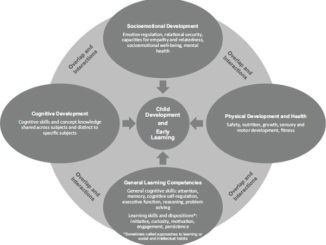
In this age of Instant Gratification and tenuous relationships there has been a radical change in attitudes to time-honoured institutions like marriage. Over the last couple of decades, marriage rates have been falling as cohabitation rates have been escalating. Compared to a generation ago when only about 10% of couples lived in, today nearly 50% live together before marriage. Though the numbers are higher in the West, India and other Asian countries are rapidly catching up.
Living-in seems a far more attractive proposition that the bondage of marriage. It is a ‘fun thing’ and partners believe in taking each day as it comes. They see no need to formalize the relationship. The standard answer given is that “neither of us is religious, and a slip of paper makes no difference to our relationship.”
Stephanie Coontz, the co-chairperson of the Council of Contemporary Families says, “Cultural acceptance and Science have broken the age-old equation of marriage and child rearing. All forms of families are claiming legitimacy and getting it.”
Many tend to blame the Feminist Movement for the devaluation of marriage. Germaine Greer derided the “middle class myth of love and marriage,” If they were caught in such a trap, they should have no qualms of breaking free.
An Indian Feminist Radha Thomas said, “Marriage is nothing else but someone else’s rules imposed on you by society. Living-in relationships are nothing out of the ordinary.”
In their book “Open Marriage – a new lifestyle,” George and Nina O’Neil call marriage “archaic, rigid, outmoded, oppressive, static and decaying,” and think monogamy should be wiped out. But long before them, Sigmund Freud was convinced that sexual liberation as against sexual restraint, was the panacea for all human emotional ills.
Bertrand Russell was also a champion of greater liberal sex. He said, “Adults have the right to cohabit as long as they don’t have children.”
Today’s young generation is an ambitious, work-oriented class by itself, which is hell-bent on reaching the top of the career scale come what may. Heady on power and wealth, they have neither the time for moral commitments, nor life-long monogamy. They cannot lose sight of their hopes and dreams for the sake of a legal document. They have no time to play loving husband or doting Dad to a brood of brats. Being economically stable makes them feel that they are “the masters of their fate and the captains of their souls.”
Many educated women have chosen a “career-only” role, and are happy in it. A career provides the opportunity to remain single. Remaining single is no more a disability. Marriage is perceived as a threat to their career goals. They have economic independence, personal freedom, and glamorous social lives. Husband and children would only disrupt a pattern to which they have grown accustomed. Sexual liberation provides pleasure without commitment. And since everyone is doing it, why not they? However, there is the likelihood of working their way into the feminist cage of unrealistic expectations and a warped understanding of love, which could distort their value systems.
Secular Humanism is another ideology, which has created a lot of confusion in the area of sexuality, because it depends entirely on the wisdom and ability of man. The rights of the individual must take precedence over everything else, no matter what destruction it leaves in its wake.
The living-in relationship goes by different names. Living together relations (LTR) has neither emotional nor legal security. The Gestalt Prayer sums up their ideology.
“I do my thing and you do your thing,
I am not in this world to live up to your expectations,
And you are not in this world to live up to mine.
You are you and I am I,
And if by chance we find each other it is beautiful,
If not it can’t be helped.”
In the Common Law marriage, the man and woman call themselves husband and wife even though there is no legal licence to seal their relationship. There are many such couples in all walks of life, and the public recognizes them as such.
However, a Contract Cohabitation involves two people in a master-servant relationship. The master may be the man or the woman. A written contract specifies duties, salary, perks, leave, medical benefits and length of contract. There are probably clauses that deal with premature termination of contract.
The advantage of a live-in relationship is that it is not oppressive. In fact, it is considered a liberating experience. It gives individuals their own space for growth, and great scope for creativity. Partners usually have the same level of intelligence, and consider themselves equal. They are not the “clinging-vine” types who need constant attention and reassurance. Neither is the woman into mothering the man, knowing full well that this could jeopardize her erotic role. Both partners value their independence, and yet remain good companions and friends. Each looks to his/her fulfillment, and is blind to the underlying selfishness in their individual characters. Children don’t figure in their equation, as responsibility is furthest from their minds.
Some live-in relationships do end up in marriage, especially if the woman falls pregnant, or the couple decides to start a family. This happens when there is stability, and a deep commitment to each other.
But the majority, are only looking for a short-term ‘high.’ Having made what is sacred commonplace, they move on to new partners. Sex is reduced to a mere biological function that can be had anywhere. There are no ties that bind, and boredom, sets in because of very little personal investment.
Some believe that marriage destroys sex. In Esther Peret’s book “Mating in Captivity” she says that domesticity dampens one’s sexual interest. Whereas living in gives the feeling of temporariness and is therefore more exciting.
Some split because of quarrels over finance and sharing of expenses. Going Dutch may not be acceptable to one partner who gets a lower salary than the other, and whose requirements may be lesser. Division of household chores may also become a bone of contention.
There could be temperamental incompatibility, with one trying to boss over the other. Quarrels may become frequent, or there may be long periods of silence, or even violence. Quirks of character considered cute earlier in their relationship, may start to annoy. Familiarity as they say can breed contempt.
Some psychologists argue that when there is mental compatibility alongside physical proximity, the relationship lasts. And the supposed sage of all wisdom Mahesh Bhatt concurs, believing sex is more about “mental mating,” than the physical act.
Living together doesn’t constitute marriage. It is an arrangement between two consenting adults, who believe they can get out of a relationship whenever they choose. Many believe that sexual experiences before marriage will help select the right mate when the time comes to finally settle down. But how many such short-range live-in relationships must one experience, before the right choice is made?
Living-in has been made easy through permissive legislation. Judicial liberalism has given a green signal to adulterous relationships. The basic surmise is the individual’s right to choose. There is no violation of law, and is perfectly legal, but the choice should be responsibly made. According to one legal luminary, “Living together is a good thing because it leads to fewer broken marriages. It is the older generation that needs a total re-orientation.”
Dr. Rakesh Chandra, a Professor of Women’s Studies, says this is a sound pronouncement as “it takes cognizance of something that is happening. It protects a woman’s rights and gives her freedom to walk out of an unsatisfactory relationship.”
Counsellor Amrita Das feels that “a live-in couple must be motivated by responsibility and commitment, and should view the relationship as a prelude to and not a substitute for marriage.” She goes on to say, “We must distinguish between living as licentiousness and living with moral intent.”
Technology has certainly come to the aid of such relationships. The problem of unwanted pregnancies is taken care of by various methods of contraception. Infections like STD and HIV can be prevented by protected intercourse and antibiotics where necessary.
Voices defending morality are lost in the war-like cries of a libertine society. Even religious institutions, which once advocated chastity, are silent, for fear of alienating young people. The media glamorizes such life-styles.
Living-in brings with it poor gains, and a plethora of psychological problems like disillusionment, insecurity, guilt, depression, loss of self-esteem and self-confidence. Eventually, it is the woman who suffers both physiologically and psychologically. When the break eventually takes place, it may be a long time before one can find another partner. Living together too has become unstable. The frequency with which couples split shows the fragility of such a relationship. Many find themselves single in middle age, and women may even lose the chance of having children.
Some studies show that couples who marry after a live-in relationship most often get divorced, because they find the responsibilities of marriage stressful. Of course unmarried couples are getting rights similar to married couples in some countries. Scandinavia gives alimony and inheritance rights to children of such liaisons.
While live-in relations are not legally wrong, the ethics are questionable. One ancient prophet said, “Woe unto them who call evil good, and good evil; that put darkness for light, and light for darkness; that put bitter for sweet and sweet for bitter.”
What is legal is not always moral; what is possible is not always prudent. The “I – Me – My” syndrome has become contagious in today’s society. The world would be a better place if life is lived in ways that enhance our dignity and self worth.
Proudly WWW.PONIREVO.COM
Source by Eva Bell



